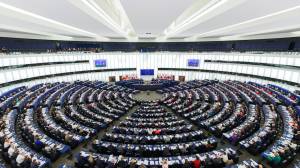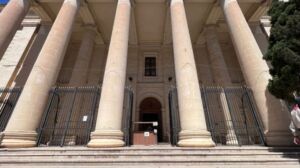Building upon the foundation established in Why Crossroads Matter: From Classic Jokes to Modern Games, we delve deeper into how crossroads serve as powerful symbols not only in entertainment but also in the complex processes that influence human decision-making. From ancient times to modern technology, crossroads represent pivotal moments that define personal paths, societal changes, and cultural narratives.
1. Introduction: Crossroads as Decision-Making Symbols in Human Culture
Crossroads are universally recognized symbols of choice and transition. They mark points where paths diverge, requiring individuals or groups to make decisions that influence their future direction. This duality connects physical crossings—such as street intersections or ancient trade routes—to psychological crossroads where internal conflicts and moral dilemmas unfold. The evolution of these symbols reflects humanity’s ongoing quest to understand and navigate the complex landscape of decision-making, transforming from concrete landmarks into abstractions representing life’s pivotal moments.
Connecting physical and psychological crossroads in human experiences
Physical crossroads often mirror internal psychological states. For example, the literal choice of which road to take can symbolize internal conflicts—such as choosing between safety and adventure or tradition and innovation. Studies in environmental psychology have shown that decision points, whether physical or mental, activate similar neural pathways, notably in areas associated with reward anticipation and risk assessment. This connection underscores how external environments can serve as metaphors for internal struggles, reinforcing the cultural significance of crossroads as decision symbols.
The evolution of decision points from cultural symbols to cognitive processes
Initially, crossroads were literal markers on trade routes, signifying strategic points of exchange or conflict. Over time, these physical markers transitioned into metaphors within language, literature, and philosophy, embodying choices that define human destiny. Contemporary cognitive science further reveals that decision-making at crossroads involves complex neural mechanisms, integrating emotion, cognition, and social influence. This progression from external symbols to internal processes illustrates how cultural perceptions of crossroads have deepened, shaping our understanding of choice itself.
2. Historical Perspectives on Crossroads and Decision-Making
a. Cultural significance of crossroads in ancient societies
In many ancient civilizations, crossroads held sacred or ritualistic importance. The Greeks and Romans designated certain intersections as liminal spaces—thresholds between worlds—where divine or supernatural influences could guide human choices. For instance, the Roman “meta” was not just a physical marker but also a symbol of transition and divine intervention. Archaeological evidence shows that crossroads often hosted temples, shrines, or markers to invoke protection or favor, emphasizing their role as focal points of decision and destiny.
b. Mythological and religious interpretations of crossroads influencing choices
Mythologies frequently depict crossroads as sites of moral and spiritual significance. In Greek mythology, the story of the hero Hercules involves choices at metaphorical crossroads, symbolizing internal moral dilemmas. Similarly, religious traditions—such as Christianity and Hinduism—consider crossroads as moments of spiritual testing or divine revelation. These interpretations reinforce the idea that decision points are not merely personal but also profoundly connected to divine or cosmic forces, shaping societal values and individual morality.
c. Transition from literal crossroads to metaphorical decision points in history
Throughout history, the literal act of choosing a path at a physical crossroads gradually became a metaphor for life’s choices. The Renaissance and Enlightenment periods emphasized individual agency, framing decision points as opportunities for moral and intellectual progress. In modern psychology, this shift is evident in the study of decision theory, which models choices as strategic interactions influenced by perceived risks, rewards, and biases. This evolution underscores how cultural narratives have transformed physical intersections into universal symbols of human agency and agency’s consequences.
3. Crossroads in Literature and Storytelling: Reflecting Internal Choices
a. Literary representations of crossroads as pivotal moments
Literature often employs crossroads to symbolize critical turning points in a character’s journey. For example, in Robert Frost’s poem “The Road Not Taken,” the diverging paths encapsulate the dilemma of choice and its lifelong implications. Similarly, in Shakespeare’s plays, characters frequently face moral crossroads that determine their fate. These narrative devices reinforce the idea that decision points are moments of potential transformation, emphasizing the importance of choice in shaping identity and destiny.
b. Symbolism of crossroads in moral dilemmas and character development
Crossroads serve as potent symbols in moral dilemmas, representing the conflict between competing values or loyalties. For instance, in Dostoevsky’s “Crime and Punishment,” Raskolnikov encounters internal crossroads that challenge his moral compass. These moments are often depicted as opportunities for redemption or downfall, illustrating how internal decision-making is pivotal to character development. The symbolism underscores that moral choices at crossroads have profound personal and societal repercussions, shaping the narrative arcs of countless stories.
c. How storytelling shapes our understanding of decision-making processes
Stories and myths serve as cultural models for understanding decision-making. They provide frameworks for contemplating the consequences of choices, often illustrating the tension between impulsive instincts and rational deliberation. Modern storytelling, from films to video games, continues this tradition by immersing audiences in scenarios where characters confront crossroads, facilitating empathy and insight into human psychology. This narrative reflection deepens our collective comprehension of the complex nature of choices, linking personal experiences to broader cultural themes.
4. Crossroads in Modern Psychology: The Science of Choice
a. Cognitive mechanisms involved in decision-making at crossroads
Contemporary cognitive neuroscience identifies key brain regions active during decision points, notably the prefrontal cortex, which is responsible for executive functions, and the limbic system, which processes emotions. Functional MRI studies reveal that at crossroads, individuals evaluate potential outcomes, weighing risks and rewards. Dual-process theories further differentiate between intuitive, fast judgments and deliberate, slow reasoning, illustrating how the brain manages complex choices under uncertainty.
b. The role of risk, reward, and uncertainty in human choices
Research in behavioral economics demonstrates that humans often deviate from purely rational decision-making due to biases such as loss aversion and overconfidence. The Prospect Theory, developed by Kahneman and Tversky, explains how perceived risks and rewards influence choices at crossroads, often leading to suboptimal outcomes. Recognizing these biases allows us to understand why individuals sometimes make inconsistent or irrational decisions when confronted with pivotal choices.
c. Influence of emotions and biases when faced with crossroads
Emotions heavily influence decision-making, especially in high-stakes situations. Anxiety, excitement, or fear can skew perceptions of risk and reward, leading to impulsive choices or avoidance behaviors. Cognitive biases such as confirmation bias or anchoring further distort rational evaluation. Understanding these psychological factors is crucial for developing effective decision-making strategies, both personally and professionally, especially when navigating complex crossroads in life.
5. Crossroads in Technology and Artificial Intelligence
a. Decision algorithms and crossroads in machine learning models
In artificial intelligence, algorithms frequently encounter decision points analogous to human crossroads. For example, reinforcement learning models assess multiple actions, selecting the one with the highest expected reward. These computational crossroads involve complex calculations balancing exploration and exploitation, risk assessments, and dynamic environmental feedback. As AI systems become more autonomous, their ability to navigate decision crossroads efficiently impacts their effectiveness and safety.
b. Ethical considerations of autonomous decision-making at crossroads
Autonomous vehicles and robotic systems face ethical crossroads—deciding how to prioritize safety, efficiency, and moral values. The “trolley problem” has been adapted to machine ethics, prompting debates about programming moral choices into AI systems. Ensuring transparency, accountability, and alignment with societal norms remains a major challenge, highlighting the importance of interdisciplinary approaches to navigating ethical crossroads in technology.
c. The impact of digital crossroads on human behavior and social interactions
Digital platforms often serve as crossroads, providing spaces for social interaction, information exchange, and cultural expression. Algorithms curate content, influencing decisions about what to see, believe, or share. This digital environment can amplify biases or create echo chambers, affecting societal cohesion. Recognizing these virtual crossroads empowers users to make more conscious choices, fostering healthier online communities and informed decision-making.
6. Non-Obvious Dimensions: Crossroads and Collective Human Identity
a. Crossroads as sites of cultural exchange and societal integration
Historically, crossroads have been hubs of cultural exchange, facilitating the blending of traditions, languages, and beliefs. The Silk Road exemplifies this, where trade routes intersected with cultural and religious crossroads, shaping civilizations. Today, multicultural urban centers continue this legacy, serving as living symbols of societal integration and diversity, where collective identities are continuously negotiated and redefined.
b. The social psychology of group decisions at crossroads
Group decision-making at crossroads often involves social influences, conformity, and leadership dynamics. Studies show that groups tend to favor consensus, sometimes at the expense of optimal choices—a phenomenon known as groupthink. Recognizing these social psychological factors is vital for understanding how societal decisions—such as political movements or community actions—are shaped at collective crossroads.
c. Crossroads as catalysts for social change and historical turning points
Moments of societal upheaval—such as revolutions, civil rights movements, or technological shifts—are often initiated at metaphorical crossroads. These junctures catalyze change by challenging established norms and opening new pathways for progress. Understanding the dynamics of these collective decision points helps explain the mechanisms behind major historical turning points, emphasizing the profound impact of crossroads on human history.
7. Practical Implications: Navigating Crossroads in Personal and Societal Contexts
a. Strategies for effective decision-making at critical crossroads
Effective navigation of crossroads involves deliberate strategies such as gathering comprehensive information, considering long-term consequences, and consulting trusted advisors. Techniques like decision matrices and scenario planning help clarify options and reduce cognitive biases. Cultivating mindfulness and emotional regulation also enhances clarity during high-stakes decisions, ensuring choices align with core values and goals.
b. Recognizing and overcoming cognitive biases in pivotal choices
Awareness of biases such as confirmation bias, overconfidence, and anchoring can improve decision quality. Techniques like considering alternative perspectives, seeking disconfirming evidence, and applying statistical reasoning help mitigate these biases. Training oneself to pause and reflect before acting at crossroads increases the likelihood of making rational and beneficial choices.
c. The importance of reflection and foresight in navigating life’s crossroads
Reflection on past decisions and foresight about future implications create a feedback loop that enhances decision-making skills. Practices such as journaling, meditation, and strategic planning foster a mindset attentive to potential outcomes. Emphasizing foresight ensures that choices made at crossroads are sustainable and aligned with long-term well-being.
8. Returning to the Parent Theme: Crossroads as Cultural and Entertainment Symbols
a. How the symbolic power of crossroads influences modern entertainment and humor
Modern entertainment continues to draw on the symbolic resonance of crossroads. Comedy routines, films, and video games often portray characters at decision points, highlighting humor or tension. For example, classic jokes like “Why did the chicken cross the road?” encapsulate the universal appeal of crossroads as humorous metaphors for life’s uncertainties. These symbols evoke familiar themes of choice and consequence, making them powerful tools in storytelling and entertainment.
b. The ongoing cultural relevance of crossroads in shaping societal narratives
Cultural narratives frequently depict crossroads during moments of societal transformation—such as pivotal elections, revolutions, or cultural shifts—emphasizing their role as sites of decision and change. Media portrayals reinforce the idea that collective choices at crossroads determine societal futures, maintaining their symbolic potency across generations.
c. Bridging personal decision-making with cultural symbolism: the universal language of crossroads
Ultimately, crossroads serve as a universal language of decision, bridging individual psychology with collective cultural meaning. Whether depicted in stories, jokes, or technological interfaces, they remind us that every choice shapes our destiny. Recognizing this shared symbolism fosters greater awareness of














